The Deepest Lakes In The World
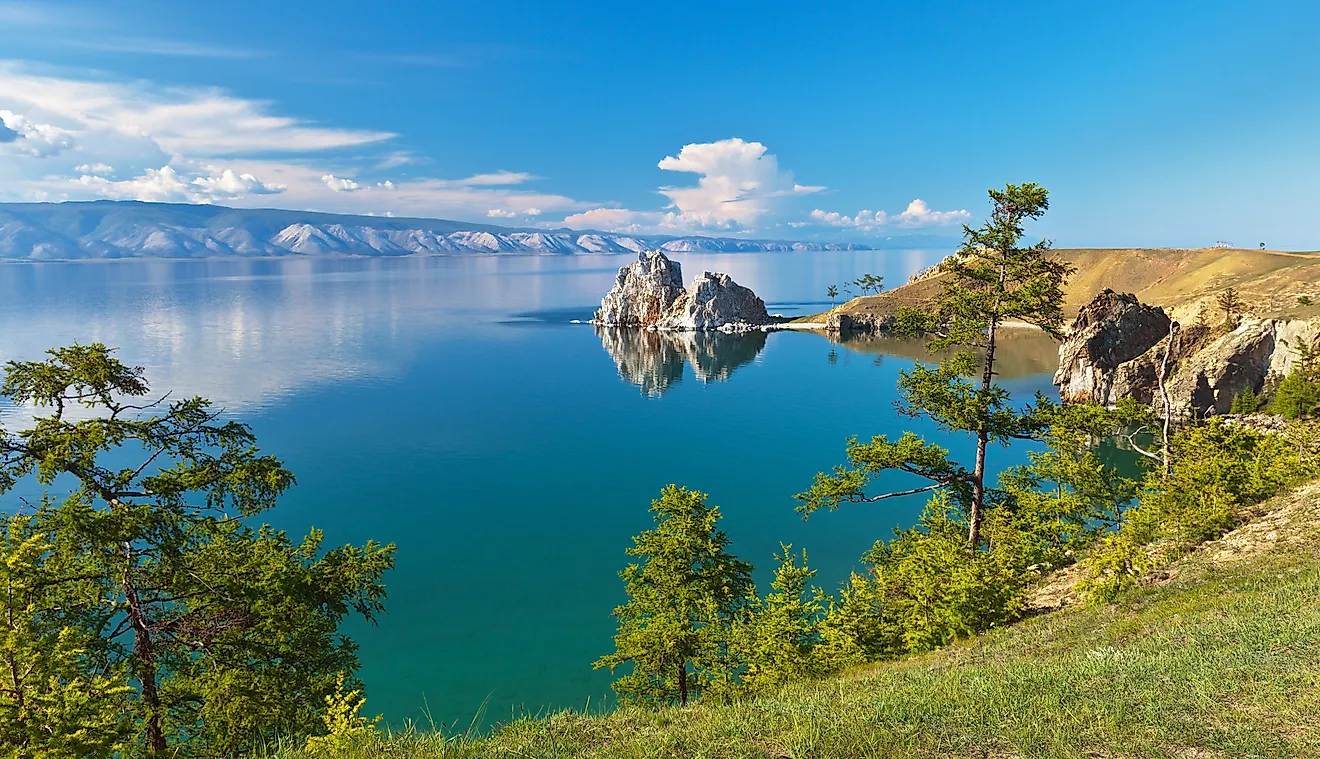
- The deepest lake in the world by both maximum depth and mean depth is Lake Baikal in Russia. It contains 20% of the Earth's freshwater.
- Vostok Lake in Antarctica is the fourth deepest lake in the world by maximum depth and third deepest by mean depth. Its water has a high concentration of oxygen and nitrogen that is under constant high pressure and in total darkness at 1,600 feet under the ice surface.
- Lake Malawi, the sixth deepest lake by maximum depth, is a meromictic lake, meaning it is composed of different layers of water that do not mix.
- Known for its spectacular beauty, the Crater Lake is a lake in a volcanic crater in Oregon, United States. It is the country's deepest lake and the 9th deepest lake in the world by maximum depth.
Lakes are usually formed in rift zones, melting glaciated areas, mountainous regions, or in basins where rivers flow. On a geologic time scale, all lakes are transitory. Over time, lakes may run out of water caused by spillage or may be filled in with sediments. However, active processes may delay a lake from drying up, such as lakes with tectonic origins, meaning they formed in a rift zone where tectonic plates collide. Some factors that cause lakes to form are landslides, sinkholes, ice-damming, volcanic eruptions, and glacier movements. Lakes also vary greatly in size, shape, and depth. The depth of lakes is measured using two parameters: the maximum depth (the distance from the surface to the deepest point in the lake) and mean depth (average depth of the lake).
The 10 deepest lakes in the world (based on maximum depth)
- Lake Baikal - 1,642 m
- Lake Tanganyika - 1,470 m
- Caspian Sea - 1,025 m
- Lake Vostok - ~1,000 m
- O'Higgins-San Martin Lake - 836 m
- Lake Malawi - 706 m
- Issyk Kul - 668 m
- Great Slave Lake - 614 m
- Crater Lake - 594 m
- Lake Matano - 590 m
Below are some interesting facts about the world's deepest lakes and a table providing a list of the world's 30 deepest lakes ranked by maximum depth.
1. Lake Baikal - 1,642 m/5,387 ft
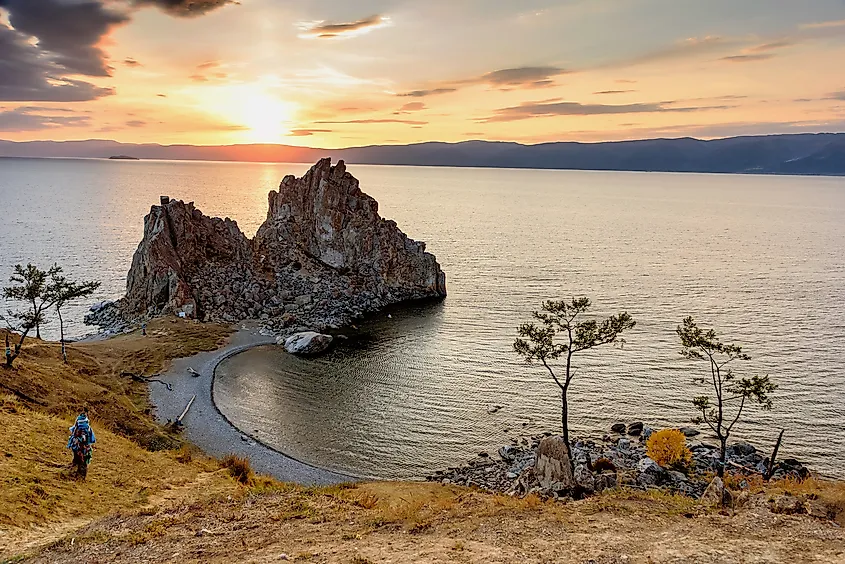
A UNESCO World Heritage Site, Lake Baikal in Russia is the deepest lake in the world. At 25 million years old, it is also the oldest lake in the world. Half of its 60 native fish species and a freshwater seal species are endemic to this lake, meaning they cannot be found anywhere else. Baikal holds 20% of the world’s unfrozen freshwater, which amounts to around 5,662 cubic miles of crystal clear freshwater—more than what the Great Lakes of North America hold in total volume!
2. Lake Tanganyika - 1,470 m/4,823 ft
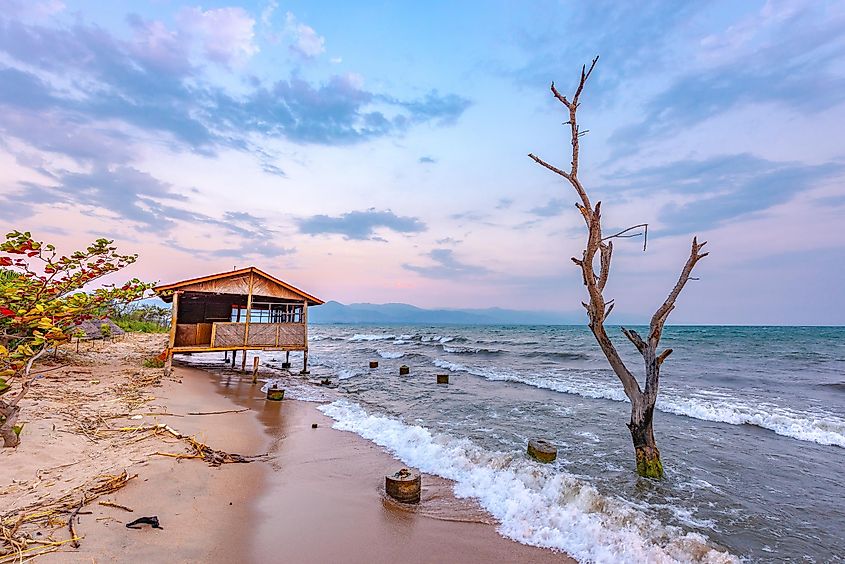
Lake Tanganyika is the second deepest lake in the world, on top of being the world’s longest lake, spanning four countries: Tanzania, the Democratic Republic of the Congo, Burundi, and Zambia. It holds around 18% of the world’s freshwater which is equal to close to 4,500 cubic miles of water. Tanganyika holds six large islands and other smaller islands. Its water has a pH of 8.4 that holds some 250 cichlid species, of which 98% are endemic. The cichlids exhibit adaptive and evolutionary radiation as well. Tanganyika has its own freshwater sardine, jellyfish, and sponge species.
3. Caspian Sea - 1,025 m/3,363 ft
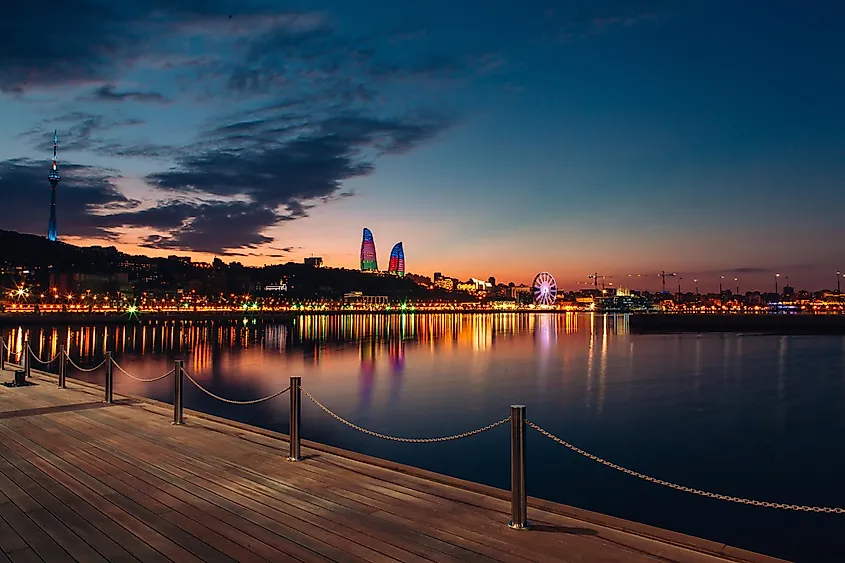
The Caspian Sea is bounded by Russia, Turkmenistan, Kazakhstan, Iran, and Azerbaijan. It holds around 18,800 cubic miles of water with 1.2% salinity although it has no connection to the ocean. It gets 80% of its water from the Volga River. The caviar-producing Beluga sturgeon are found in this lake along with tuna, which has been the core of the fishing industry in the area. It has its own salmon and seal population. The areas around the lake and the lake itself has oil reserves underneath, of which some have been tapped.
4. Lake Vostok - ~1,000 m/~3,300 ft
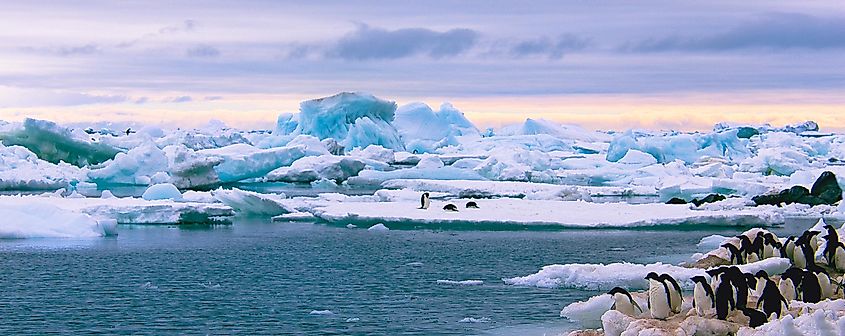
Vostok Lake in Antarctica is, at 3,300 feet, the fourth deepest lake in the world. It was named after the Russian Vostok Station, which is close to it. It holds around 1,300 cubic miles of freshwater, 1,600 feet under the ice surface. Its water has a high concentration of oxygen and nitrogen that is under constant high pressure in total darkness. Microbial organisms have been detected in ice core drillings, while extremophile microbes found on frozen lake waters also suggest further presence of life. The lake is under protection by environmental groups who contest the ice drilling methods being employed as having a potential for contaminating the lake water underneath the ice.
5. O'Higgins-San Martin Lake - 836 m/2,742 ft
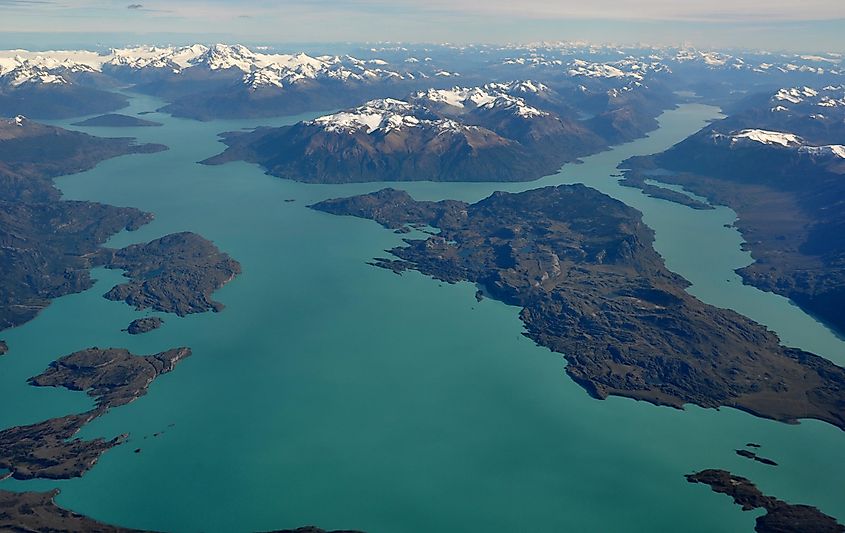
O'Higgins-San Martin Lake at 2,742 feet is the fifth deepest lake in the world, and its territory in Patagonia is shared by Chile and Argentina. Its name comes from two independence movement liberators from Chile. The lake is known as Lago O'Higgins in Chile and Lago San Martin in Argentina. Its shape forms finger-like extensions that end in flooded valleys in both countries. The Mayer River supplies most of its water while the Pascua River discharges its water into the Pacific Ocean.
6. Lake Malawi - 706 m/2,316 ft
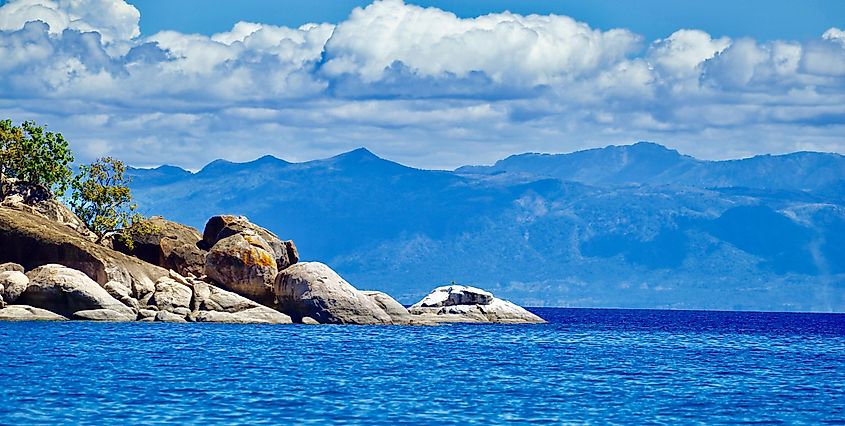
Lake Malawi spans the borders of Malawi, Mozambique (where it is known as Lago Niassa), and Tanzania (where it is known as Lake Nyasa). It has around 2,000 cubic miles of freshwater and is a meromictic lake, meaning it is composed of different layers of water that do not mix. Malawi hosts close to 1,000 cichlid fish species that continue to speciate, in addition to non-cichlid species. The Ruhuhu River provides most of its water while the Shire River discharges its water to the Zambezi River.
7. Issyk Kul - 668 m/2,192 ft
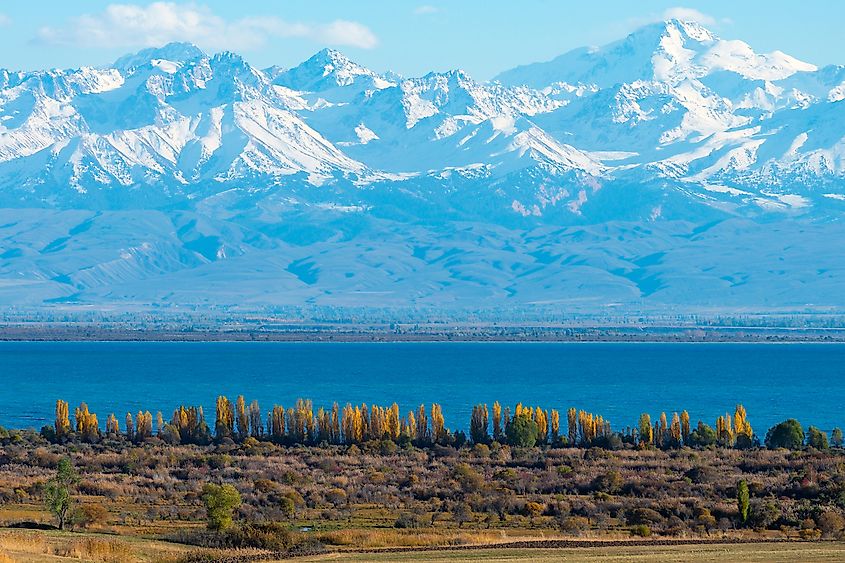
Issyk-Kul, the world's seventh deepest lake, is located in the Tian Shan mountain region in Eastern Kyrgyzstan. It is an endorgeic lake that although surrounded by snow-capped peaks, it never freezes. Hence its name Issyk Kul means warm lake in the Kyrgyz language. It hosts great biodiversity and is a designated Ramsar site and part of the Issyk Kul Bisphere Reserve.
8. Great Slave Lake - 614 m/2,015 ft
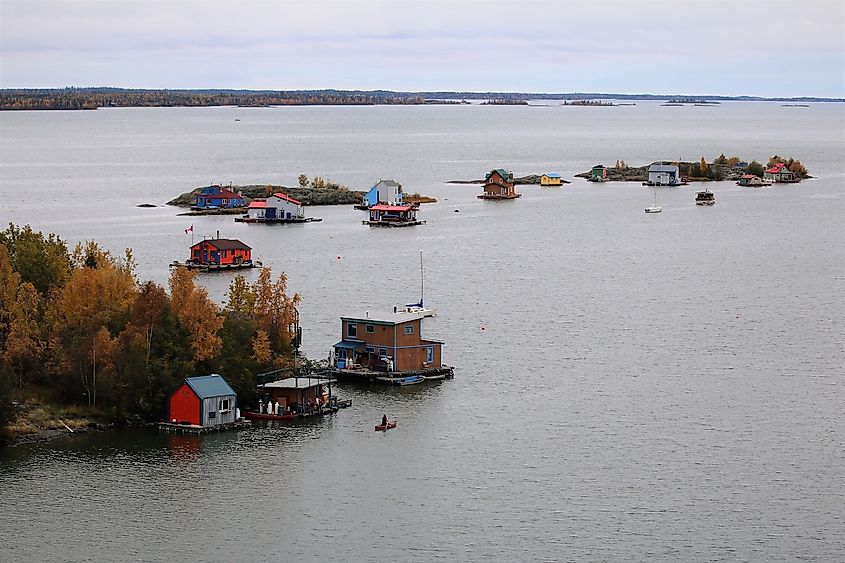
The Great Slave Lake is North America's deepest lake. It is located in Northwest Territories of Canada. The lake has forests on its western shores while the other shores have tundra-like environment. The shorelines are very irregular and many islands are also located in the lake.
9. Crater Lake - 594 m/1,949 ft
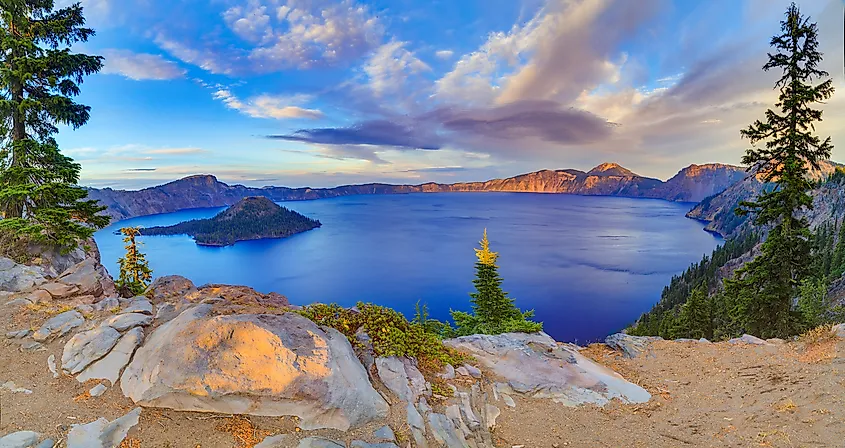
Known for its spectacular beauty, the Crater Lake is a lake in a volcanic crater in Oregon, United States. It is the country's deepest lake. Its deep blue color is a sight to behold. The caldera which it fills was formed by a volcanic eruption of Mount Mazama around 7,700 years ago. The lake has no outlet or inlet. The loss of water through evaporation is compensated for by rainfall or snowfall.
10. Lake Matano - 590 m/1,936 ft
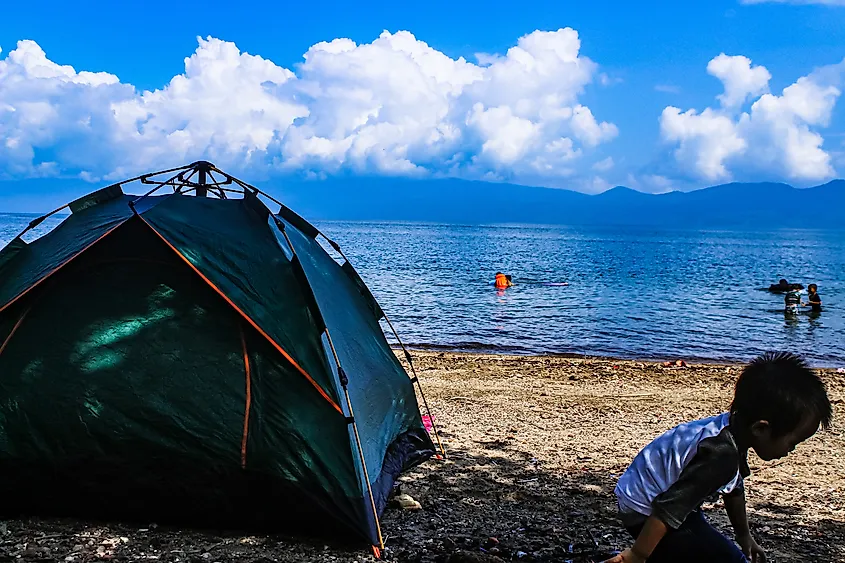
The world's tenth deepest lake by maximum depth, Lake Matano, is located in South Sulawesi, Indonesia. It is the country's deepest lake as well as the world's deepest lake by maximum depth that is located on an island. The deepest portion of Lake Matano is below sea level.
Ranking Deepest Lakes By Mean Depth
While the above list ranks lakes by maximum depth, scientists consider mean deapth to be a more useful indicator in the context of ecological usefulness. However, accurate measurements of both a lake's surface area and volume are needed to calculate its mean depth. That is not easy as a bathymetric survey is needed to measure a lake's volume reliably. Mean depth is calculated by dividing the volume of the lake by its surface area. Such measurements are often not possible for many remotely located lakes or those located in difficult terrain. Hence, accurate mean depth measurements are available for only well-studied lakes.
The five deepest lakes in the world based on mean depth are:
- Lake Baikal - 744.4 m/2442 ft
- Lake Tanganyika - 570 m/1,870 ft
- Lake Vostok - 430 m/ 1,411 ft
- Crater Lake - 350 m/1,148 ft
- Lake Tahoe - 301 m/989 ft
Limnology Of Lakes
Lakes have three zones. These include the littoral zone near land, the photic zone in the open-water area where sunlight pervades, and the benthic zone housing deep-water lake habitats. A lake affects the temperature of its surrounding areas such as lowering the air temperature during the day while at night, air temperature may go up. Although lakes provide livelihood and food for the people living around it, some dangers are present when landslides and earthquakes cause the mixing of the benthic water to release carbon dioxide to the surface air. The released carbon dioxide could potentially flow into human inhabited regions and cause mass asphyxiation. This happened at Lake Nyos in Cameroon in 1986, when a landslide created a cloud of CO2, suffocating 1,746 people and over 3,000 livestock.
Deepest Lakes In The World
| Rank | Name of lake | Country/Countries where it is located | Maximum depth in meters | Maximum depth in feet |
|---|---|---|---|---|
| 1 | Baikal | Russia | 1,642 | 5,387 |
| 2 | Tanganyika | Tanzania Democratic Republic of the Congo Burundi Zambia | 1,470 | 4,823 |
| 3 | Caspian Sea | Iran Russia Turkmenistan Kazakhstan Azerbaijan | 1,025 | 3,363 |
| 4 | Vostok | Antarctica | ~1000 | ~3300 |
| 5 | O'Higgins-San Martín | Chile Argentina | 836 | 2,742 |
| 6 | Malawi/Nyasa/Niassa | Mozambique Malawi Tanzania | 706 | 2,316 |
| 7 | Issyk Kul | Kyrgyzstan | 668 | 2,192 |
| 8 | Great Slave | Canada | 614 | 2,015 |
| 9 | Crater | United States | 594 | 1,949 |
| 10 | Matano | Indonesia | 590 | 1,936 |
| 11 | General Carrera-Buenos Aires | Chile Argentina | 586 | 1,923 |
| 12 | Hornindalsvatnet | Norway | 514 | 1,686 |
| 13 | Quesnel | Canada | 511 | 1,677 |
| 14 | Toba | Indonesia | 505 | 1,657 |
| 15 | Sarez | Tajikistan | 505 | 1,657 |
| 16 | Tahoe | United States | 501 | 1,645 |
| 17 | Argentino | Argentina | 500 | 1,640 |
| 18 | Kivu | Democratic Republic of the Congo Rwanda | 480 | 1,575 |
| 19 | Salsvatnet | Norway | 464 | 1,523 |
| 20 | Nahuel Huapi | Argentina | 464 | 1,523 |
| 21 | Hauroko | New Zealand | 462 | 1,516 |
| 22 | Cochrane / Pueyrredón | Chile Argentina | 460 | 1,509 |
| 23 | Lake Tinn | Norway | 460 | 1,509 |
| 24 | Adams | Canada | 457 | 1,499 |
| 25 | Chelan | United States | 453 | 1,486 |
| 26 | Van | Turkey | 451 | 1,480 |
| 27 | Poso | Indonesia | 450 | 1,476 |
| 28 | Fagnano | Argentina Chile | 449 | 1,473 |
| 29 | Great Bear | Canada | 446 | 1,463 |
| 30 | Manapouri | New Zealand | 444 | 1,457 |











